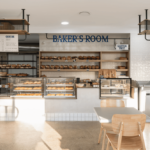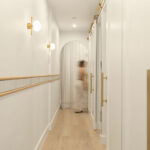How to Fitout a Yoga Studio
Opening a yoga studio? How zen of you! But what’s probably not-so-zen is the worry of ensuring it becomes a success.
So, how do you fitout your studio so that it has all the local yogis omming? Our fit out expert, Peter Zafis from Total Fitouts Surry Hills, takes us through the key steps.
Step 1: Decide on the Location
Firstly, where is the studio going to be? Location is crucial.
If you’ve haven’t already found your space, ensure you keep these things in mind when scouting for the best location:
- The local community – yoga is about community, and you want to be part of the local community in terms of both location and feel.
- Access and parking requirements – choose somewhere that’s easily accessed (ideally with easy and unlimited parking). Make it as simple as possible for people to access your studio.
- Zoning – is very important as it affects all your council approval processes. It’s best to be in a ‘recreation’ zone. (You can try for others but it’ll cost you and you could be denied by council.)
- Street/shop frontage – it’s important yogis can see/find/stroll by your beautiful studio.
Step 2: Calculate the Size/Profitability Ratio
Before deciding on the space, Peter recommends calculating the size you need by “working backwards”.
“Think about profitability – how many people do you need per class to make a profit? In particular, the minimum number of people. It might be that if you have 15 people per class you make a profit, while if you only have 12, you’re losing money. It’s a business so you need to think about your bottom line.”
Once you’ve calculated how many people you’re hoping to have per class – both the goal number and the minimum number – then you can work out how big you need your practising studio space to be. (Remember to accommodate space for yoga mats, a gap between, a spot for the teacher, etc.)
However, you don’t just need a space to practise, you also need all the other elements:
- Landing area – where clients sign in, the reception desk and potentially a feature wall
- Bathrooms, showers and a changing room
- Lockers or storage for your yogis
- Community area and/or somewhere to fill up water bottles
- Area for staff to keep their personal belongings
Peter suggests leaving 40 sqm for the front landing area or community space, with some kind of feature wall. “You’ll sacrifice space at the back but it’s important as a fresh and new-looking space draws clients and creates a place to hang out and create community, which is what yoga is about.”
Plus, he adds, “it’s also great for Instagram – clients will post pictures, just while hanging out. It sounds unimportant but Instagram will likely be one of the best marketing tools.”
When calculating your space, keep in mind that COVID restrictions could still be in place for a little while yet too.
Step 3: Maximising your Design
This leads us to design – and, more importantly, maximising your design (because as you’ve read, you’ll be trying to fit a lot of elements into the space).
Total Fitouts can help you make the most of your space through the design – we take you through the considerations you need to make your business successful and how to use your space effectively.
“The better the design, the better the result. There needs to be a natural ‘operational flow’ through the space” explains Peter. “Think about a McDonald’s kitchen production line – that space is designed to be as effective and efficient as possible. You want your space as well thought out as a McDonald’s kitchen.”
Three crucial elements that also come into the design are:
- Lighting – natural light is best (meaning north-facing windows), or the feel of natural light, as it makes a space feel light and airy
- Flooring – you need floorboards or some kind of flooring that’s good for practising and easy to clean constantly
- Sound – acoustic sound is ideal for creating minimal disruption to neighbours (it’s also worth thinking about what kind of sound system, you’ll need)
If your space doesn’t have natural light, Peter reassures that there are other options. “Lighting is a sweet science – with the right electrical engineering, you can make it feel as though there is natural light.”
Step 4: Hire Experts
After you’ve done your recon, your calculations and found your space, we recommend bringing in the experts.
When you meet with Total Fitouts, Peter says “our job is to get as much information as possible – get your thoughts onto paper, and turn your ideas into plans.”
Before you chat to us, outline your:
- Concept – the more info you can give the designer, the better
- Timeline – when do you want your studio ready for use?
- Budget – what’s your budget?
- Priorities – where do you want to spend the big bucks and what’s a nice-to-have?
From there, we’ll be able to help you flesh out your design, work out the intricate details and devise a plan that’s going to help your yoga studio be a roaring (or meditating) success.
Need help with your yoga studio fitout? Reach out to your local Total Fitouts team.





